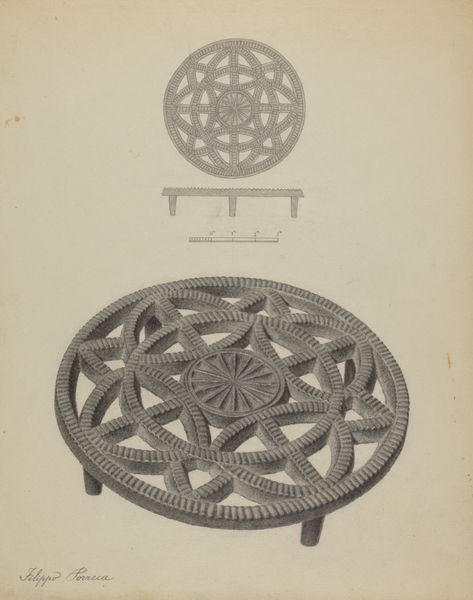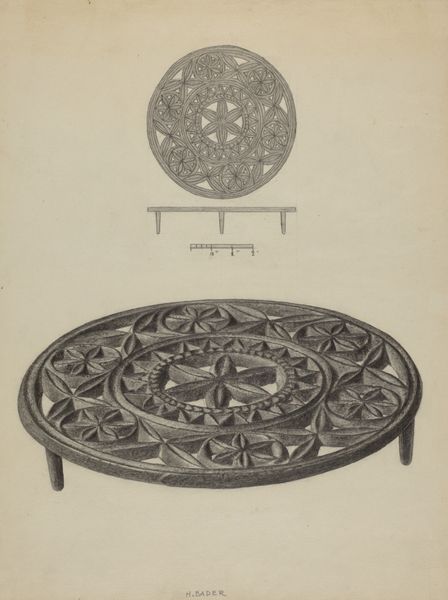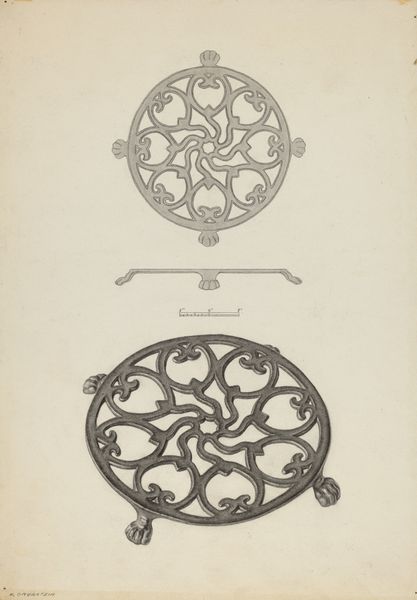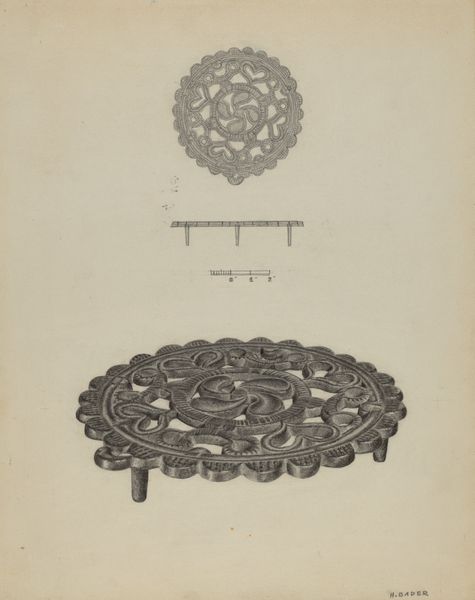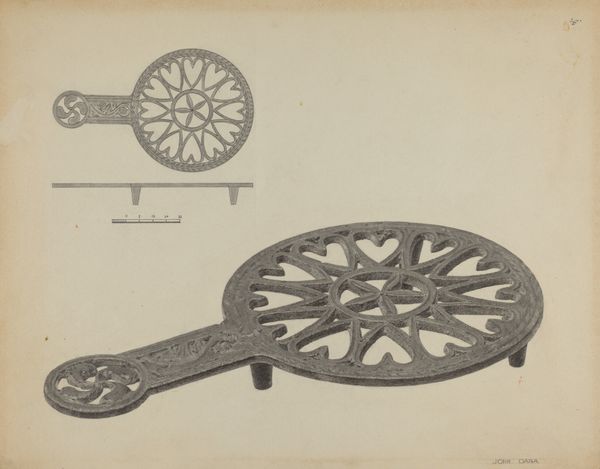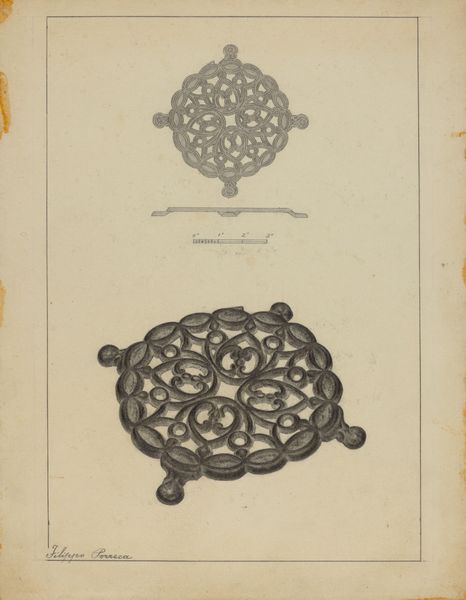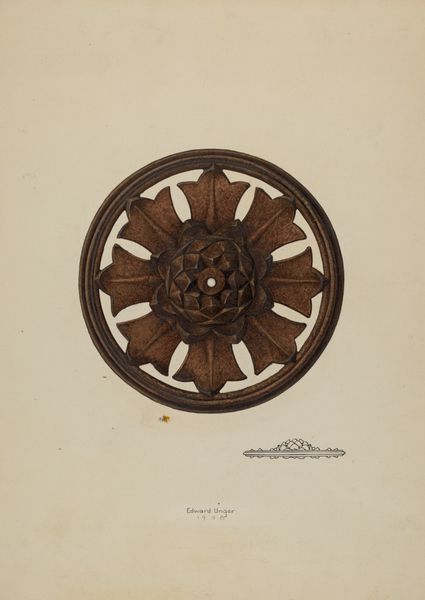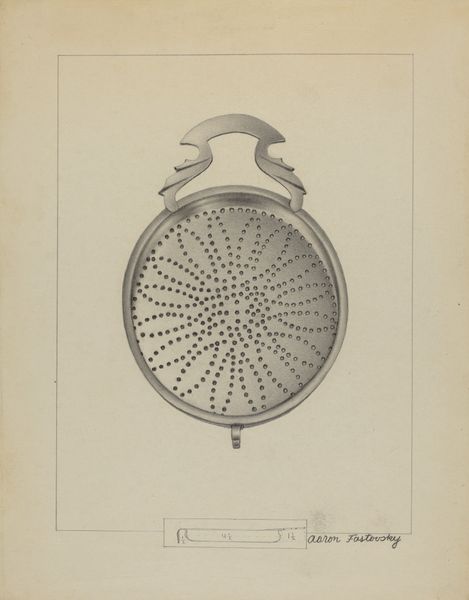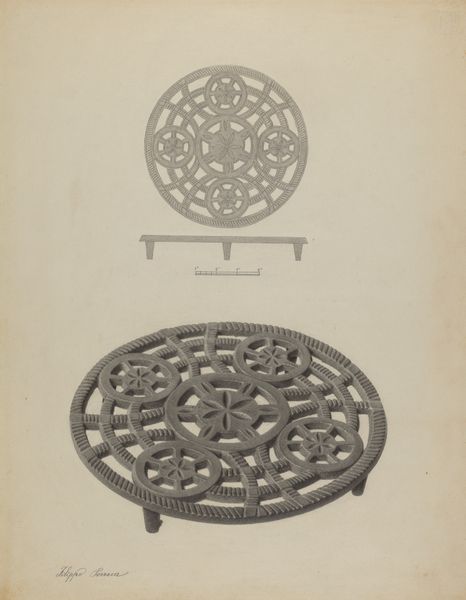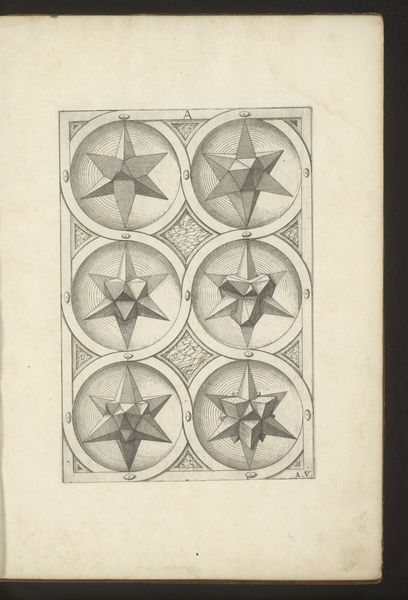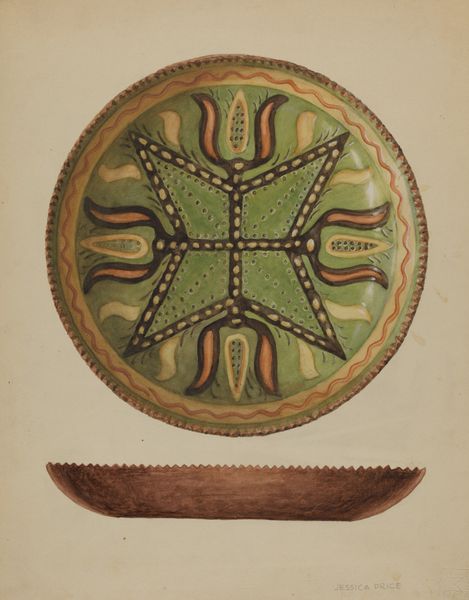
drawing, pencil, graphite
#
pencil drawn
#
drawing
#
pencil drawing
#
geometric
#
pencil
#
graphite
#
academic-art
Dimensions: overall: 29.1 x 22.7 cm (11 7/16 x 8 15/16 in.) Original IAD Object: 6 1/2" in diameter; 1 1/4" high
Copyright: National Gallery of Art: CC0 1.0
Curator: Alright, let's dive into this intriguing drawing. It's a study titled "Trivet," dating back to around 1937, crafted in graphite and pencil. Editor: Hmm, it's unexpectedly… grounded. There’s a practical serenity to it. Before I knew it was a trivet, the intricate, almost floral geometry had a strangely calming effect. It feels… humble. Curator: Humble, yes! It depicts, quite literally, a humble household object. But, looking closer, one could argue it is making commentary on gendered labor, right? I'm curious about the context: Could this have been a subtle way to elevate the domestic, given the traditional associations of trivets and similar objects with the undervalued labor of women in the household? Editor: Ah, the unsung symphony of domesticity. Makes you wonder if Rothenberg felt like he was giving a stage to something often overlooked. And speaking of stages, the composition, with those multiple perspectives, feels very intentional. It gives me the sense that Rothenberg is exploring the layers of functionality, adding new depth by taking these angles of perception. Curator: I see what you mean; It is as if, in its almost obsessive detailing, we are acknowledging that it is something vital to the rhythms of life in a space. And, if this were created in 1937, this was an era where streamlining and new visions of the functional object took hold of popular design. So is Rothenberg engaging or critiquing the rise of mass-produced functional design through its intricate geometry, which resists such logic? Editor: Perhaps! This perspective highlights what might seem invisible—everyday lives in spaces, rendered now not in an artistic painting, but almost like technical diagrams. Like he is mapping domestic intimacy itself. What I do find really compelling, though, is the texture achieved solely with pencil strokes. It's like Rothenberg is proving that profundity can exist in simplicity. Curator: Precisely, especially how art-making also elevates an overlooked perspective to take precedence, through the simple art supplies in our pencil case. Overall, I think this small drawing is such a thought-provoking, poetic reflection on object and space. Editor: Indeed, a reminder that significance often hides in plain sight and the potential of just pencil, paper and some ingenuity to unearth the art in the everyday.
Comments
No comments
Be the first to comment and join the conversation on the ultimate creative platform.
